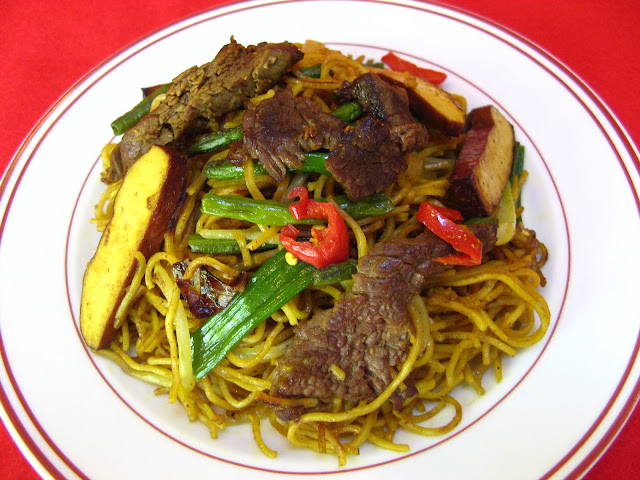This recipe was updated on 02 Aug 2015. Some instructions
and ingredient quantities were changed, and metric measurements added.
I’ve always wanted to make this dish after eating at the
local Muslim Chinese restaurant, which serves a dish called Three Flavor Dough
Sliced Noodles (三鮮刀削麵, Saam1 Sin1
Dou1 Soek3 Min6); the three flavors being
beef, chicken and shrimp. I’ve adapted the ingredients to use Shanghai noodles
and added a few other ingredients not found in the restaurant dish. Making this
dish is more involved than your normal Chinese noodle dish since you need not
just one flavor, but all three flavors available at once to make the dish, and
it’s rare that I have all three available at the same time. While I had all the
three ingredients available, I also made the Three
Flavor Fried Rice (三鮮炒飯, Saam1 Sin1
Caau2 Faan6) recipe.
Coin-sized Shiitake mushrooms are available at your local
Asian supermarket. If you can’t find coin-sized Shiitake mushrooms, use the
normal sized (larger than coin-sized) and cut them into ½-inch (15 mm.) wide
pieces. Coin-sized Shiitake mushrooms are more for visual effect in the dish
and taste no different than their larger counterparts.
There also are a lot of ingredients, both in number and
quantity, used to make this dish. I used double the amount of noodles than I
usually use to make noodle dishes, so there was always a question of whether or
not my wok could hold everything. In my case, it worked, but this may be too
much for your wok or pan. I’ve written the recipe to use only one pound (500
g.) of noodles to reflect the smaller amount. Feel free to reduce the quantity
of the ingredients – especially the beef, chicken, shrimp, and noodles – to
make this dish.
Enjoy!






